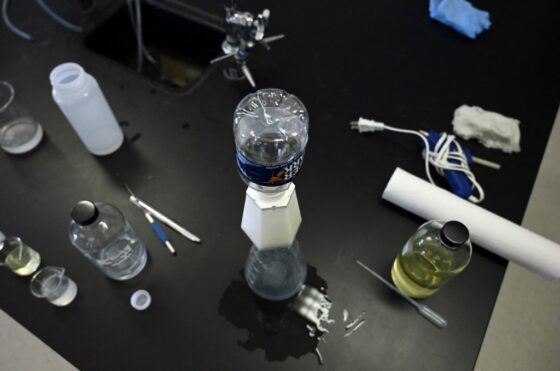
When the pandemic forced American schools to resort to distance learning, physics teacher Rebecca Bushway gave her high school students in suburban Washington an ambitious task: to design and build a lead-free, low-carbon water filter.
Using 3D printers, the student team now has a ready-to-use prototype: an approximately 8cm high filter that attaches to faucets and that they hope to eventually bring to market for a unit price of just a dollar.
“The scientific principle is simple. I thought to myself, we have these 3D printers, what if we did something like that”.
Mrs Bushway
The professor presented the prototype at four conferences, including the prestigious American Chemical Society conference. She now hopes to write an article in a scientific journal.
Up to 10 million American households still get their tap water through lead pipes, and such exposure is especially harmful during childhood.
In 2014, lead-contaminated water in the city of Flint was one of the worst health scandals in the United States in recent years. The tragedy was caused by the decision of the local authorities to change the source of the city’s water supply as a cost-saving measure.
The acidic and polluted water of the local river, which was preferred to the clean water of nearby Lake Huron, had eaten away at the lead pipes of the distribution system, exposing residents to lead poisoning. The lead poisoning of thousands of Flint children threatens to have catastrophic health consequences for decades to come.
In the United States, lead pollution primarily affects African Americans and other minorities, said Nia Frederick, a high school student who participated in the filtering project. “And I think we can help”she says.
The administration of President Joe Biden has already pledged billions of dollars to fund the removal of all lead pipes across the country in the coming years. But until that happens, Americans need solutions.
A smart filter
Ms. Bushway’s idea was to use the same chemical reaction used to restore contaminated soil: exposing lead dissolved in water to a powder of calcium phosphate, which produces a solid phosphate of lead that remains in the filter, as well as benign calcium.
The filter has another trick up its sleeve: under the calcium phosphate is a reservoir with potassium iodide.
When the calcium phosphate runs out, the lead dissolved in the water will react with the potassium iodide, giving the water a yellow hue. This new color of the water will therefore be the signal that the filter needs to be replaced.
Wathon Maung, a student, spent several months designing the housing that houses the filter, using 3D printing software. “It was like a kind of puzzle that I had to solve”makes the high school student excited.
Calcium phosphate accumulated in the filter, slowing down the speed of the reaction principle. But Wathon Maung found that he could incorporate hexagonal chamfers that help ensure water flow and prevent pooling.
The result: a flow of about 7.5 liters per minute, the normal rate for water that comes out of the tap.
Now the team would like to incorporate an instrument called a spectrophotometer that, using a tiny LED warning light, detects yellowing of water faster than the naked eye, signaling the end of the filter’s life.
(AFP)